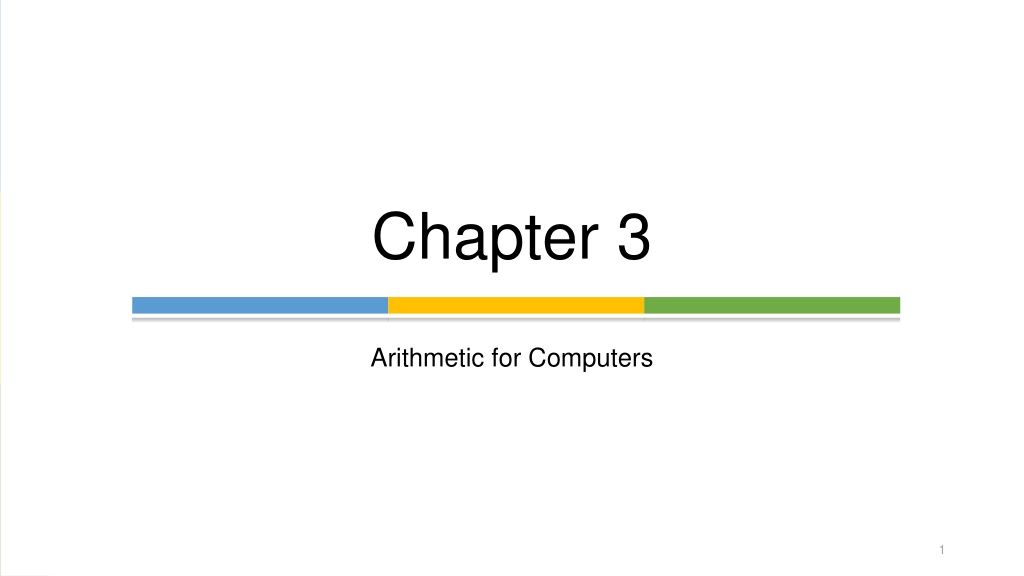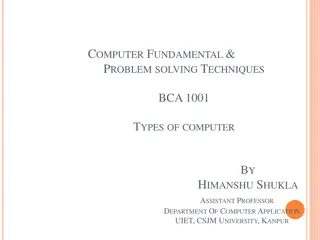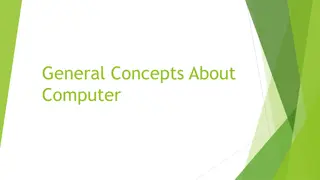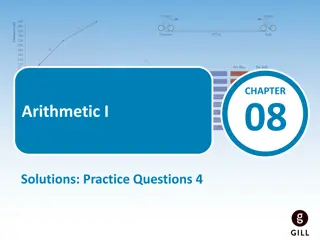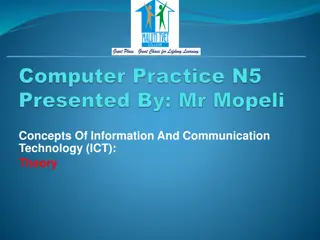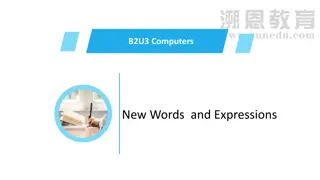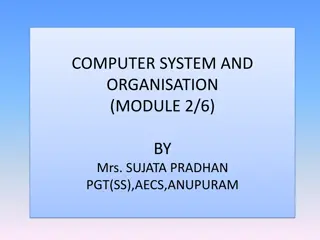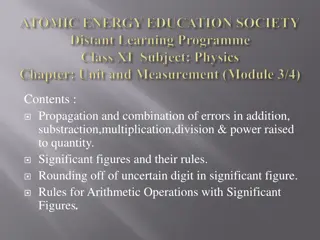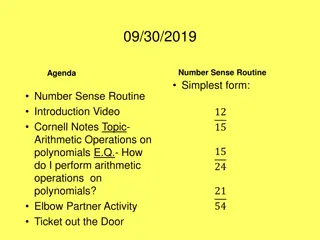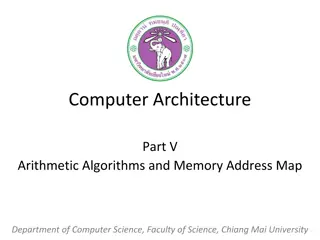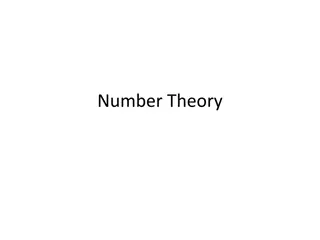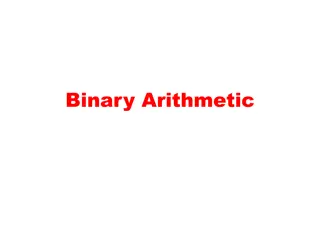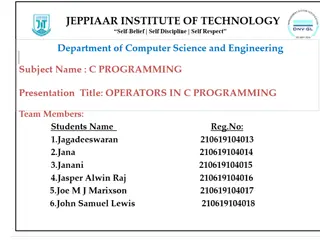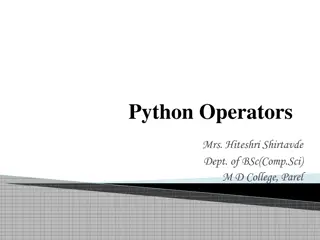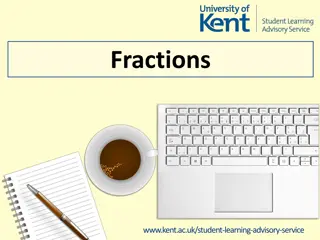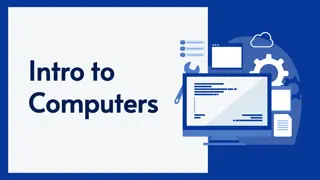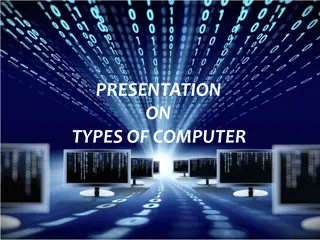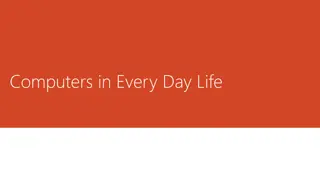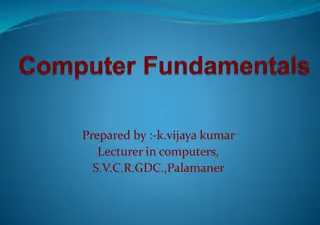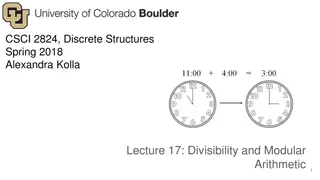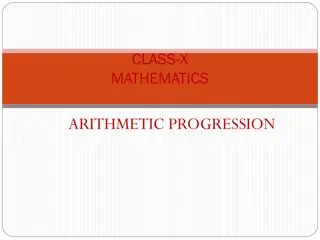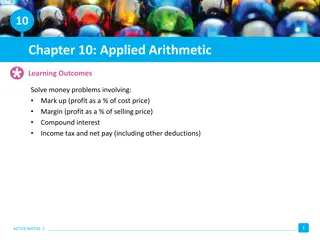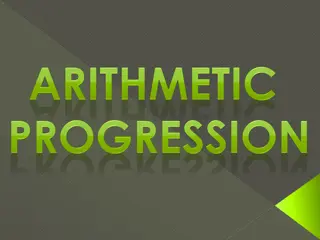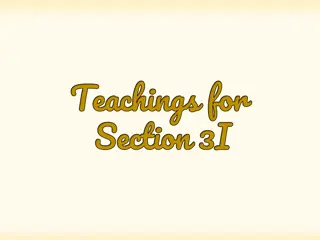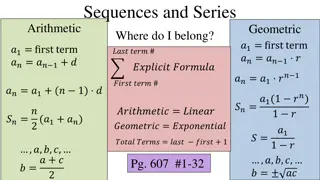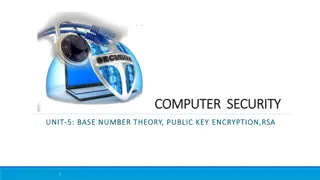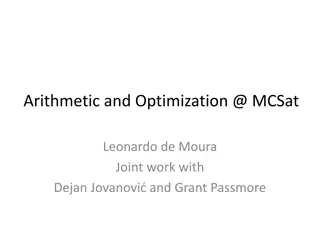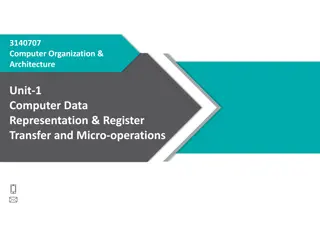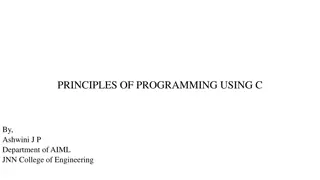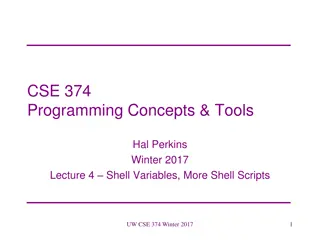Understanding Arithmetic Operations for Computers
The chapter delves into the fundamentals of arithmetic for computers, covering operations on integers, dealing with overflow, handling floating-point real numbers, and more. It explores addition, subtraction, multiplication, and division in detail, showcasing examples and techniques for efficient computation. Additionally, it discusses multimedia arithmetic operations on vectors and the process of multiplication, including hardware optimization strategies for efficient processing.
Download Presentation

Please find below an Image/Link to download the presentation.
The content on the website is provided AS IS for your information and personal use only. It may not be sold, licensed, or shared on other websites without obtaining consent from the author. Download presentation by click this link. If you encounter any issues during the download, it is possible that the publisher has removed the file from their server.
E N D
Presentation Transcript
Chapter 3 Arithmetic for Computers 1
3.1 Introduction Arithmetic for Computers Operations on integers Addition and subtraction Multiplication and division Dealing with overflow Floating-point real numbers Representation and operations 2
3.2 Addition and Subtraction Integer Addition Example: 7 + 6 Overflow if result out of range Adding +ve and ve operands, no overflow Adding two +ve operands Overflow if result sign is 1 Adding two ve operands Overflow if result sign is 0 3
Integer Subtraction Add negation of second operand Example: 7 6 = 7 + ( 6) +7: 0000 0000 0000 0111 6: 1111 1111 1111 1010 +1: 0000 0000 0000 0001 Overflow if result out of range Subtracting two +ve or two ve operands, no overflow Subtracting +ve from ve operand Overflow if result sign is 0 Subtracting ve from +ve operand Overflow if result sign is 1 4
Arithmetic for Multimedia Graphics and media processing operates on vectors of 8-bit and 16-bit data Use 64-bit adder, with partitioned carry chain Operate on 8 8-bit, 4 16-bit, or 2 32-bit vectors SIMD (single-instruction, multiple-data) Saturating operations On overflow, result is largest representable value (positive or negative) c.f. 2s-complement modulo arithmetic E.g., clipping in audio, saturation in video 5
3.3 Multiplication Multiplication Start with long-multiplication approach multiplicand 1000 multiplier 1001 1000 0000 0000 1000 1001000 product Length of product is the sum of operand lengths 6
Multiplication Hardware Initially 0 7
Optimized Multiplier Algorithm and hardware refined to take one clock cycle per step Perform steps in parallel: add/shift One cycle per partial-product addition That s ok, if frequency of multiplications is low The hardware is usually further optimized to halve the width of the adder and registers by noticing where there are unused portions of registers and adders 8
Multiplication - example Using 4-bit numbers to save space, multiply 2ten 3ten, or 0010two 0011two 9
Faster Multiplier Uses multiple adders Cost/performance tradeoff Can be pipelined Several multiplication performed in parallel 10
LEGv8 Multiplication Three multiply instructions: MUL: multiply Gives the lower 64 bits of the product SMULH: signed multiply high Gives the upper 64 bits of the product, assuming the operands are signed UMULH: unsigned multiply high Gives the lower 64 bits of the product, assuming the operands are unsigned 11
3.4 Division Division Check for 0 divisor Long division approach If divisor dividend bits 1 bit in quotient, subtract Otherwise 0 bit in quotient, bring down next dividend bit Restoring division Do the subtract, and if remainder goes < 0, add divisor back Signed division Divide using absolute values Adjust sign of quotient and remainder as required quotient dividend 1001 1000 1001010 -1000 10 101 1010 -1000 10 remainder divisor n-bit operands yield n-bit quotient and remainder 12
Division Hardware Initially divisor in left half Initially dividend 13
Divide - example Using a 4-bit version of the algorithm, divide 7ten by 2ten, or 0000 0111two by 0010two. 14
Optimized Divider One cycle per partial-remainder subtraction The speed-up comes from shifting the operands and the quotient simultaneously with the subtraction. This refinement halves the width of the adder and registers Looks a lot like a multiplier! Same hardware can be used for both 15
Signed Division Remember the signs of the divisor and dividend and then negate the quotient if the signs disagree -7 +2: quotient = -3 Remainder = (dividend quotient x divisor) = -7 (-3 x +2) = -1 -7 +2: quotient = -3, remainder = -1 +7 -2: quotient = -3, remainder = +1 -7 -2: quotient = +3, remainder = -1 The correctly signed division algorithm negates the quotient if the signs of the operands are opposite and makes the sign of the nonzero remainder match the dividend 16
Faster Division Can t use parallel hardware as in multiplier Subtraction is conditional on sign of remainder Faster dividers (e.g. SRT division) generate multiple quotient bits per step using a table lookup based on the upper bits of the dividend and remainder Still require multiple steps The accuracy of this fast method depends on having proper values in the lookup table 17
LEGv8 Division Two instructions: SDIV (signed) UDIV (unsigned) Both instructions ignore overflow and division-by-zero LEGv8 software must check the divisor to discover division by 0 as well as overflow. 18
